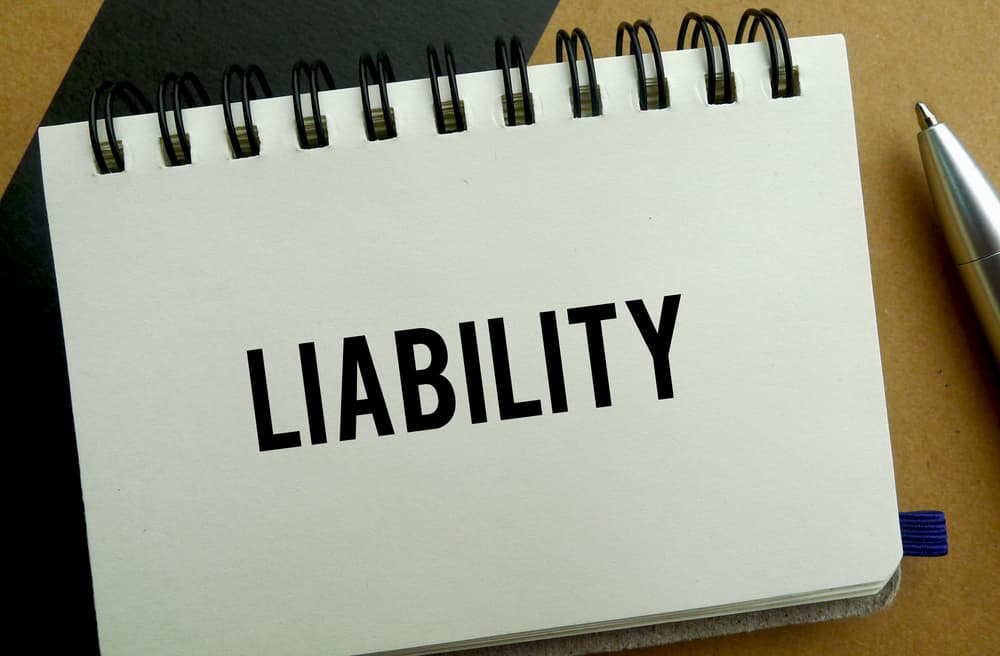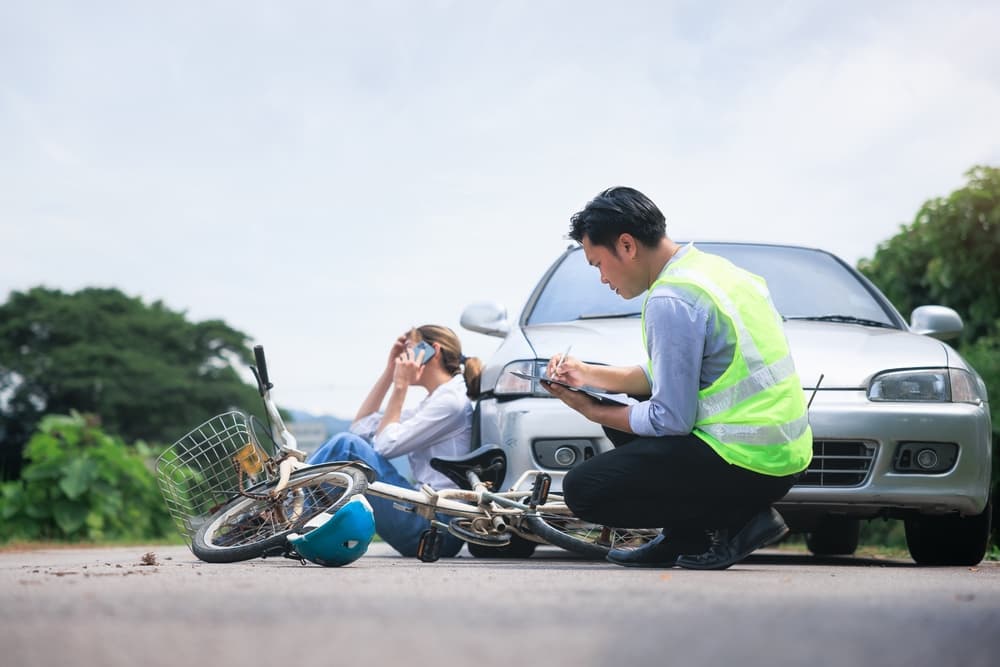The jolt of the crash is over, you have spoken with the police, and you are finally back in the quiet of your own home. The adrenaline fades and is replaced by a wave of questions and worries.
Your car is damaged, you feel sore and shaken, and now you must deal with insurance. You know you were not at fault for the accident, whether on the busy I-35 corridor in Austin or a quiet street in Temple.
This leads to one of the most common points of confusion: understanding what your liability insurance covers if you're not at fault. The answer is often not what people expect, and it sets the stage for the entire claims process ahead.
The Real Purpose of Your Liability Insurance
First, let's clear up the main point of confusion. Your liability insurance policy is not designed to pay for your own injuries or vehicle damage after a crash. Its purpose is to protect your finances if you are the one who causes an accident.

The term liability simply means legal and financial responsibility for causing harm to another person. Think of it as a financial shield. If you were to cause a collision, your liability coverage would step in to pay for the other person’s expenses.
This is why Texas law requires all drivers to carry a minimum amount of this coverage. Your liability policy is designed to pay specific costs for others when you are at fault, including:
- Bodily Injury Liability: This covers the medical bills, lost wages, and pain and suffering of people you injure in a crash.
- Property Damage Liability: This covers the cost of repairing or replacing the other person’s vehicle or any other property you damage, like a fence or a mailbox.
So, when another driver is at fault, their liability insurance is the one that should pay for your losses, not yours. Your policy is there to protect you from claims made by others, not to pay for your own claim against someone else.
So, Who Pays for Your Damages After a Texas Wreck?
Since your liability coverage is not the source of payment, the money for your damages must come from the at-fault driver’s insurance policy. When you seek payment from the other driver’s insurer, you are filing what is known as a third-party claim.
A third-party claim is a demand for compensation made against an insurance policy that is not your own. You are the "third party" in the relationship between the at-fault driver and their insurance company.
The at-fault driver's Bodily Injury and Property Damage liability coverage is responsible for paying for your losses. These losses, often called "damages" are much more than just the dent in your bumper.
A successful third-party claim should provide compensation for:
- All Medical Expenses: This includes the initial emergency room visit, follow-up doctor's appointments, physical therapy, medication, and any future medical care related to the accident injuries.
- Lost Income: If your injuries prevent you from working, you are entitled to compensation for the wages you have lost and may lose in the future.
- Vehicle Repair or Replacement: This covers the cost to fix your car. If the cost of repairs is more than the car is worth, a situation sometimes called a "total loss," the insurance company should pay you the fair market value of your vehicle.
- Pain and Suffering: This compensates you for the physical pain, emotional distress, and disruption to your life caused by the accident and your injuries.
Imagine you were rear-ended while stopped in traffic near the Killeen Mall. The responsible driver’s insurance company should be writing checks for your doctor visits and car repairs.
What Happens When the At-Fault Driver Has No Insurance (or Not Enough)?
Life is not always that simple. You may find out that the driver who hit you has no insurance at all or carries only the minimum amount required by law, which is often not enough to cover serious injuries.
This is a scary situation, but it is where parts of your own auto insurance policy may come to the rescue. This is completely separate from your liability coverage.
Two key types of coverage on your own policy can help:
- Uninsured/Underinsured Motorist (UM/UIM) Coverage: Uninsured/Underinsured Motorist coverage is an optional part of your auto policy that acts as a safety net. It steps in to pay for your losses if the at-fault driver has no insurance (uninsured) or not enough insurance to cover all your damages (underinsured). In Texas, insurance companies must offer you this coverage, and you must reject it in writing if you do not want it.
- Personal Injury Protection (PIP): Personal Injury Protection is another type of coverage on your own policy that pays for your initial medical bills and a portion of your lost wages, no matter who was at fault for the accident. Like UM/UIM, insurers must offer it. It provides quick access to money for your bills without waiting for the other driver's insurance to accept responsibility.
The process for using UM/UIM is straightforward. First, it must be confirmed that the other driver is uninsured or their policy limits are insufficient to cover your bills. Then, you file a claim with your own insurance company under your UM/UIM coverage.
At that point, your own insurer essentially takes the place of the at-fault driver's company and pays for your damages up to the limits you selected for your policy.
Why Giving a Recorded Statement is Risky
Very early in the process, the other driver's insurance adjuster will call and ask you to provide a recorded statement about the accident. They may present this as a routine, necessary step.

You are not legally required to provide a recorded statement to the other person’s insurance company. These calls are a tool for the insurer to find information they can use against you.
You should be cautious about giving a recorded statement for several reasons:
- They Twist Your Words: A simple "I'm doing okay" can be used later to argue your injuries are not serious.
- They Ask Tricky Questions: Adjusters are trained to ask questions designed to get you to accidentally admit some level of fault.
- It Locks in Your Story: If you later remember a key detail about the accident or realize your injuries are worse than you initially thought, the adjuster can use your recorded statement to question your credibility.
It is often better to decline the request for a recorded statement until you have had a chance to fully assess your situation and understand your rights.
Calculating What Your Claim is Actually Worth
The insurance company is not going to tell you the full value of your claim. It is up to you to understand all the ways the accident has impacted you and to seek fair payment. Your damages fall into two main categories.
The first category is economic damages. Economic damages are all of the specific, measurable financial losses you have suffered. This includes things like your past and future medical bills, lost paychecks, and the cost to repair your car.
They are straightforward because there is a receipt or an invoice for them.
The second, and equally important, category is non-economic damages. Non-economic damages are compensation for harms that do not have a specific price tag.
These are very real losses and include:
- Physical pain and suffering
- Mental and emotional anguish
- Loss of enjoyment of life
- Disfigurement or scarring
For example, if a severe injury from the crash prevents you from enjoying a hobby you love, like hiking the trails at Cameron Park, that loss has value and should be part of your claim. Calculating these damages is complex, but they are a critical component of fair compensation.
What Does Liability Insurance Cover If You’re Not At Fault? A Summary
Let's bring it all together. When you are injured in a car accident in Texas and the other driver is at fault, the payment process follows a specific order. Your own liability insurance is not part of this process.
It is there to protect you if you cause a crash, not to pay you when someone else does. The primary sources of payment for your damages are, in order:
- The At-Fault Driver's Liability Insurance: Their policy is the first and main source of compensation for all your economic and non-economic damages.
- Your Uninsured/Underinsured Motorist (UM/UIM) Coverage: If the at-fault driver has no insurance or not enough to cover your losses, your own UM/UIM policy acts as a crucial backup.
- Your Personal Injury Protection (PIP) Coverage: This part of your policy provides immediate funds for medical bills and lost wages, regardless of fault.
Your personal health insurance also plays a role by paying for medical treatments upfront, and it will typically seek reimbursement later from the at-fault party's insurance.
Putting the Pieces Together After a Central Texas Accident
Dealing with the aftermath of a car accident is stressful and confusing. You are trying to heal from your injuries, manage your daily life without a working vehicle, and field calls from insurance adjusters.
The system is complicated, and making a mistake that could affect your ability to get fair compensation for what you have been through is easy. You do not have to handle this alone.

A personal injury lawyer can manage the entire claims process for you, from investigating the accident and gathering evidence to negotiating with the insurance company. This allows you to focus on your recovery.
The team at Lorenz & Lorenz, PLLC, has a history of assisting clients in Austin, Waco, and throughout Central Texas. If you are feeling lost after a wreck, reach out to see how we can help.
For a free case evaluation, contact our Austin office at (512) 477-7333 or our Waco office at (254) 662-4800.
Frequently Asked Questions
Do I have to use my own insurance if the other driver was 100% at fault?
You generally do not use your own liability insurance. However, you might use other parts of your own policy. For example, you may want to use your Personal Injury Protection (PIP) coverage for immediate medical bills or your Uninsured/Underinsured Motorist (UM/UIM) coverage if the at-fault driver is uninsured or their policy is insufficient to cover your damages.
What if the other driver’s insurance company denies my claim?
If the other driver's insurer denies your claim, they must provide a reason. They may argue their driver was not at fault or that your injuries are not related to the crash. At this point, you will need to present strong evidence to counter their denial. This is a situation where legal assistance is extremely valuable to challenge the denial and fight for the compensation you deserve.
How long do I have to file a personal injury claim in Texas?
In Texas, the law that sets a deadline for filing a lawsuit is called the statute of limitations. For most personal injury cases, including car accidents, the statute of limitations is two years from the date of the accident. If you do not file a lawsuit within this two-year window, you will likely lose your right to seek compensation forever.
Should I see a doctor even for a minor ache after a crash?
Yes. After any car accident, it is wise to get a medical evaluation, even if you feel you are only slightly sore. Some serious injuries, like whiplash or internal injuries, may not show symptoms for hours or even days. Seeing a doctor creates an official medical record that links your injuries to the accident, which is critical evidence for your insurance claim.
The at-fault driver’s insurance offered me a quick settlement. Should I take it?
You should be very cautious about accepting an early settlement offer. Insurance companies often make low initial offers to close claims quickly and cheaply, before the full extent of your injuries and financial losses is known. Once you accept a settlement, you cannot ask for more money later, even if you discover you need more medical treatment.
It is usually best to wait until you completely understand your total damages before settling.